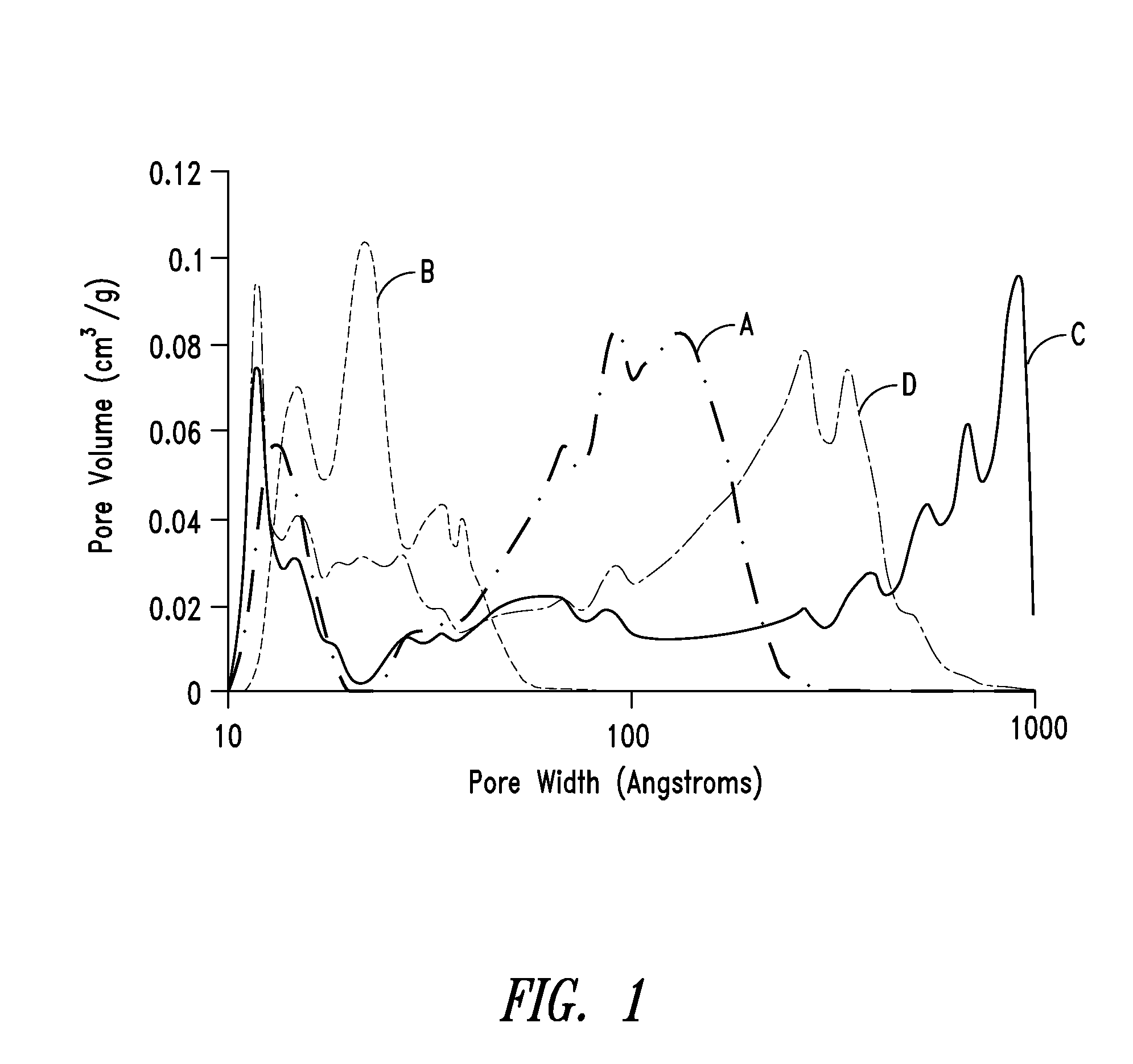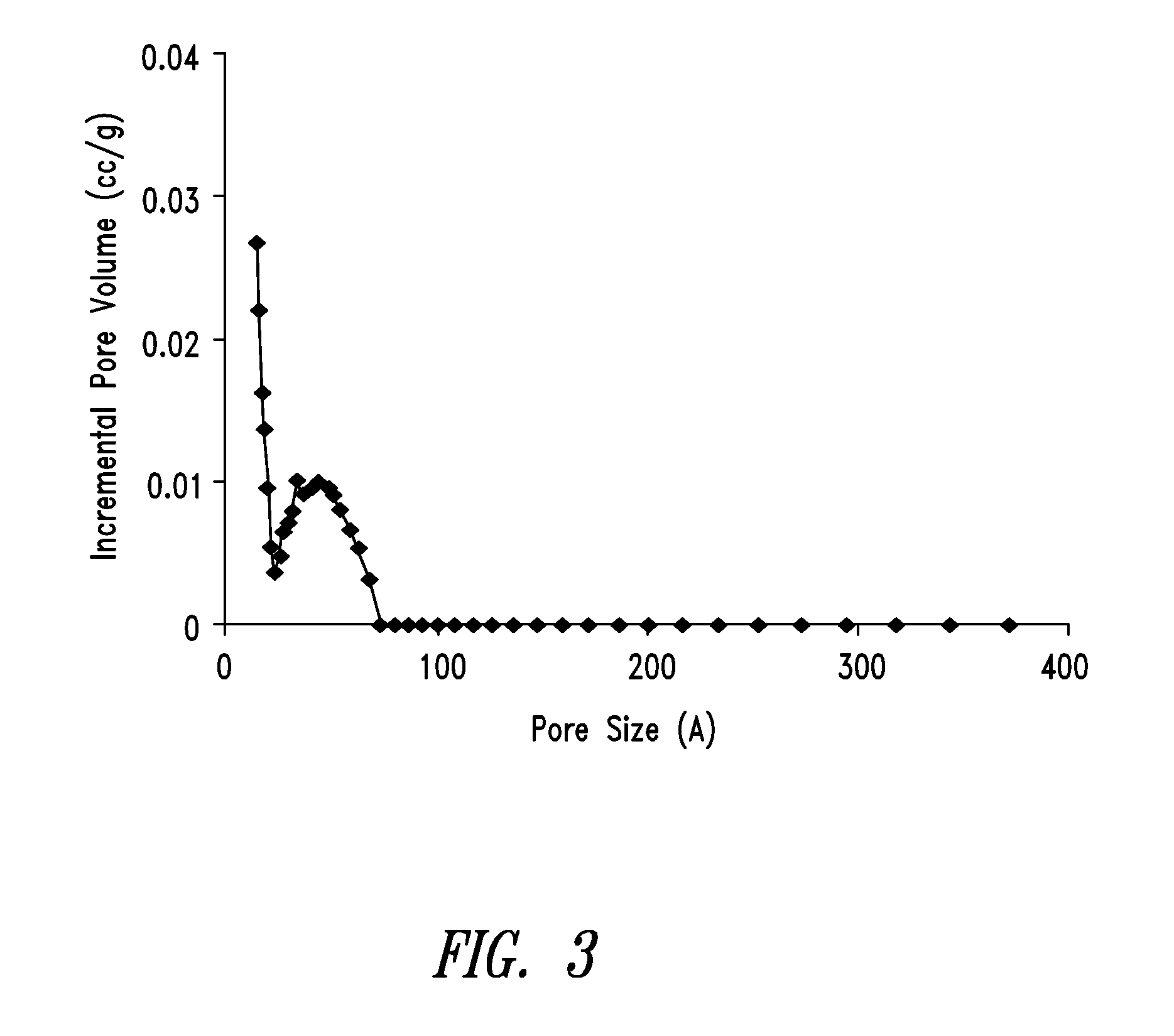Mesoporous carbon materials comprising bifunctional catalysts
a technology of mesoporous carbon and catalyst, which is applied in the direction of fuel and primary cells, electrochemical generators, cell components, etc., can solve the problems of limited energy density, uncompromised range of electric vehicles versus today's internal combustion engine powered automobiles, and theoretical energy density of lithium-air electrochemical couples, etc., to facilitate metal-air reaction, increase energy density and active life, and high specific energy
- Summary
- Abstract
- Description
- Claims
- Application Information
AI Technical Summary
Benefits of technology
Problems solved by technology
Method used
Image
Examples
example 1
Preparation of Dried Polymer Gel
[0268]A polymer gel was prepared by polymerization of resorcinol and formaldehyde (0.5:1) in water and acetic acid (75:25) and ammonium acetate (RC=25, unless otherwise stated). The reaction mixture was placed at elevated temperature (incubation at 45° C. for about 6 h followed by incubation at 85° C. for about 24 h) to allow for gellation to create a polymer gel. Polymer gel particles were created from the polymer gel and passed through a 4750 micron mesh sieve. The sieved particles were frozen by immersion in liquid nitrogen, loaded into a lyophilization tray at a loading of 3 to 7 g / in2, and lyophilized. The time to dry (as inferred from time for product to reach within 2° C. of shelf temperature) varied with product loading on the lyophilizer shelf.
[0269]The surface area of the dried polymer gel was examined by nitrogen surface analysis using a Micrometrics Surface Area and Porosity Analyzer (model TriStar II). The measured specific surface area u...
example 2
Preparation of Pyrolyzed Carbon Material from Dried Polymer Gel
[0270]Dried polymer gel prepared according to Example 1 was pyrolyzed by passage through a rotary kiln at 850° C. with a nitrogen gas flow of 200 L / h. The weight loss upon pyrolysis was about 52%.
[0271]The surface area of the pyrolyzed dried polymer gel was examined by nitrogen surface analysis using a surface area and porosity analyzer. The measured specific surface area using the standard BET approach was in the range of about 600 to 700 m2 / g.
example 3
Production of Activated Carbon
[0272]Pyrolyzed carbon material prepared according to Example 2 was activated by multiple passes through a rotary kiln at 900° C. under a CO2 flow rate of 30 L / min, resulting in a total weight loss of about 45%.
[0273]The surface area of the activated carbon was examined by nitrogen surface analysis using a surface area and porosity analyzer. The measured specific surface area using the BET approach was in the range of about 1600 to 2000 m2 / g.
PUM
| Property | Measurement | Unit |
|---|---|---|
| impurity | aaaaa | aaaaa |
| impurity | aaaaa | aaaaa |
| temperature | aaaaa | aaaaa |
Abstract
Description
Claims
Application Information
 Login to View More
Login to View More - R&D
- Intellectual Property
- Life Sciences
- Materials
- Tech Scout
- Unparalleled Data Quality
- Higher Quality Content
- 60% Fewer Hallucinations
Browse by: Latest US Patents, China's latest patents, Technical Efficacy Thesaurus, Application Domain, Technology Topic, Popular Technical Reports.
© 2025 PatSnap. All rights reserved.Legal|Privacy policy|Modern Slavery Act Transparency Statement|Sitemap|About US| Contact US: help@patsnap.com



